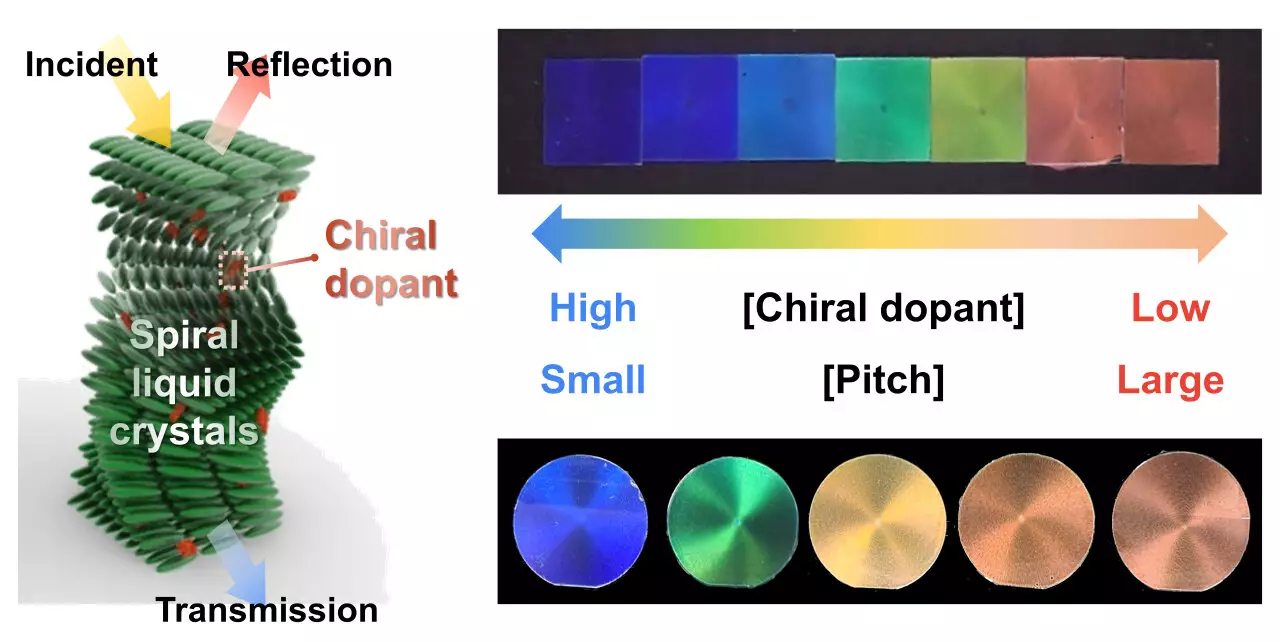Dr. Jin Gu Kang and his team at the Nanophotonics Research Center at the Korea Institute of Science and Technology (KIST) have made a groundbreaking discovery in the field of cooling technology. They have developed a colorful radiation-cooling liquid crystal material that can cool without the need for external power while also emitting vibrant colors. This innovative material has the potential to revolutionize the way we cool our surroundings, offering a more eco-friendly and aesthetically pleasing alternative to traditional cooling methods.
Radiative cooling is a cutting-edge cooling technology that does not rely on electricity to function. Instead, it releases infrared radiation as heat through the atmospheric window, effectively lowering temperatures without the need for power-hungry air conditioners. This eco-friendly approach to cooling is gaining traction as a next-generation solution to combat rising energy consumption and climate change. By harnessing the power of radiative cooling, we can reduce our carbon footprint and create a more sustainable future.
Traditionally, radiative cooling materials for daytime use have been white to minimize sunlight absorption and maximize cooling performance. However, this limited the application of these materials in settings where aesthetics are important, such as buildings and vehicles. The development of colored radiative cooling materials that combine cooling functionality with vibrant colors has recently become a hot topic in the scientific community. By using bent spiral liquid crystal photonic crystals, Dr. Jin Gu Kang and his team have overcome the limitations of traditional colored cooling materials and created a solution that is both visually appealing and highly effective.
The implications of this innovative colored radiation-cooling liquid crystal material are far-reaching. By combining it with transparent and metallic films, the research team was able to achieve a significant temperature reduction compared to traditional commercial paint. This material has the potential to be used on the exterior of buildings and vehicles to reduce air conditioning consumption while adding a touch of color and style. Additionally, it could be utilized in outdoor leisure items and military tents to provide power-free cooling solutions. The simplicity and cost-effectiveness of the spin coating process make this technology accessible and scalable for widespread adoption.
The development of colored radiative cooling liquid crystal material represents a major advancement in the field of cooling technology. By combining functionality with aesthetics, this innovative material has the potential to transform the way we cool our surroundings and reduce our environmental impact. With further research and development, it could become a staple in sustainable cooling solutions for the future.


Leave a Reply